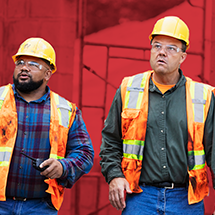-
Job Seekers
X
Job Seekers
Whether you're looking for a temp job or a permanent career, Labor Finders has you covered!
-
Explore
- How it works
- Industries
- Blog
- Locations
- Job Search
You May Also Be Interested In

2024 Employee of the Year
Learn more about our amazing Employee of the Year
-
-
Employers
X
Employers
Let us help you find the workers you need, when you need them.
You May Also Be Interested In

2024 Staffing Trends Quiz
Construction Staffing Trends Quiz
-
Industries
X
Employer Industries
Ready to staff your next project? Our staffing experts has the knowledge and the workers to cater to your unique staffing needs.
In this Section:
Job Seeker Industries
From construction to waste management, we have job openings in whatever industry you’re interested in.
In this Section:
-
About
X
About You
Getting matched to the right job, gaining the flexibility you want, making an impact in your community - at Labor Finders, it’s all about you!
-
You may also be interested in
- About Us
- Job Search Results
- Find an Office
- How it works
- Blog
About Us
With almost 200 offices nationwide, we’ve been putting people back to work for over 40 years. See why we’re a leader in the blue-collar staffing industry.
-
You may also be interested in
- About Us
- Media Center
- Video Library
- Leadership Team
- Careers
- In The Community
- History
-
- Location
Employment Readiness
The Ultimate Guide to Welding, Part 2: How to Become a Certified Welder

One of the best ways to advance your welding career is to receive specialized certification. New training brings opportunities for money, leadership, and promotion. Job prospects vary with your skill level, so up-to-date training in the newest technology strongly increases your value as a worker.
How to Become a Certified Welder
Depending on the type of work, welding certification may or may not be mandatory. If you are hired by a small fabrication shop to do minor welds, then you may not need to be licensed. However, if you are hired as a welding engineer to create structural integrity for bridges, then you must be certified and might even have to take an on-site test to validate your certification to your employer. At the end of the day, the company that hires you is responsible and liable for your welds.
Welders should get certified before working to ensure that their skill set is up to the code they will be working under. In fact, certification will also increase your chances of getting hired because most companies want to hire trained, certified welders instead of inexperienced workers. Receiving specialized training is one of the best ways to advance your welding career because it brings opportunities for money, leadership, and promotion. Let’s talk about the steps you need to take in order to get certified.
Obtain a High School Diploma
Welders are constantly measuring and calculating, so fundamental classes in algebra and geometry are beneficial. Science courses, such as chemistry, physics and engineering, will provide a better understanding of how welding works. Many high schools also offer classes in fabrication and welding.
Get a Certificate or Degree in Welding
After high school, students who want to obtain a higher degree in welding can complete a two-year program for a Welding Technology Associate’s Degree. Beyond the Associate’s Degree is the four-year Welding Engineering Bachelor’s Degree.
There is also a wide range of welding certification programs available because welding codes vary depending on the industry and type of work. On average, welding certification programs last from six to eighteen months and can cost from $3,500 to $20,000 depending on the level of training. The welding certification is earned by passing a hands-on test conducted by a certified welding inspector that will determine if you can produce a high-quality weld up to code.
Participate in an Apprenticeship
Working as an apprentice provides practical hands-on welding experience. This on-the-job training enhances your value on job sites, developing your welding skills under the supervision of master welders.
Earn a Welding Certification
Welding certifications validate your knowledge and skill level to a potential employer. Most welding certifications are earned through the American Welding Society. The AWS offers nine professional certifications, including Certified Welder (CW), Certified Welding Inspector (CWI), Senior Certified Welding Inspector (SCWI), and Certified Welding Educator (CWE).
Read more about the industries that employ welders in The Ultimate Guide to Welding, Part 3: Industries that Employ Welders.
Considering a career in welding? Click here to connect with a Personal Job Agent in your area that can help you get started.














